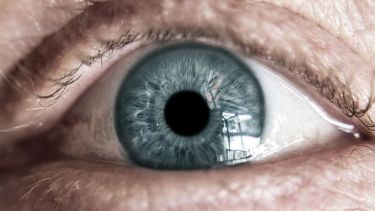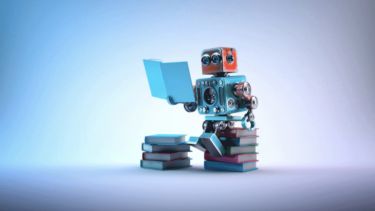Covid-19 and vision impairment in Britain: a narrative of absence
by Anna Pilson, PhD student at the University of Durham School of Education and iHuman affiliate member

absence
/ˈabs(ə)ns/
noun
the state of being away from a place or person.synonyms:non-attendance, non-appearance, absenteeism
the non-existence or lack of.synonyms:lack, want, non-existence, unavailability, deficiency, deprivation, dearth;
omission, exclusion, default;
need, privation, famine, drought, poverty
failing, in default of, lacking, wanting, notwithstanding, without
‘Absence’ is a word that arises consistently in the mind when considering the impact of Covid-19 on the UK’s blind and visually-impaired community. Vision impairment is a low-incidence disability and at best, we may suggest that its low prevalence may explain its apparent absence in the thought-process of the British government and institutions during the outbreak to supporting this community. However, I contend that the reason goes beyond ‘accidental forgetfulness’.
From potentially catastrophic delays in accessing crucial public health information due to inaccessible formatting of official documentation and guidance, to simply ITV failing to provide auditory back-ups to public service announcements broadcast about the filming of Coronation Street, there has been a distinct absence of care towards blind and visually-impaired people. This socio-political exclusion is symptomatic of their positioning as ‘abject and Other’ (Liddiard, 2020) by inherently dis/ableist attitudes that remain foundational in our society.
Medical Model
The adherence to the medical model of disability by the UK government during the Covid-19 pandemic has affected visually impaired people in unexpected ways. It has (re)positioned them within the margins of society, but in a new sense. The medicalisation of disability in crisis-reactive policy has not been used to perpetuate traditional stereotypes of blindness and deficit, in fact, (superficially at least) quite the opposite. It has instead positioned visually-impaired people as ‘normal’ (Davis, 2006) members of society. However, this ‘normal’ is absent of any positive connotations.
This ‘normal’ is a loaded term, and ”normality’ is a moving target’ (Shakespeare, 2007, p. 52). And in temporarily occupying the space of ‘normalcy’ from which they are usually excluded by bio-political oppressive forces, the visually-impaired community has found itself placed within the crosshair of Covid-19. Disablement has taken on new forms, as normative (mis)conceptions of ability are applied in a newly-directional, and potentially fatal, ways.
Othering
The Covid-19 outbreak has caused blind and visually impaired peoples’ lives to truly exist at the dis/abled hyphen (Goodley, 2014; Goodley & Runswick-Cole, 2014). They are ‘othered’ by their position within the new hierarchy of disability created by Covid – perceived as ‘not disabled enough’ to warrant governmental ‘protection’ and therefore, are unable to register on the national ‘vulnerable list’. Yet conversely, vulnerability is forced upon them due to their absence on this list by another absence – the absence of consideration of what it means to be access the world through tactile means when any surface can harbour a deadly viral load.
Blind people during COVID are expected to put their lives at risk to ‘pop to the shops’. They are subject to violence – a visually-impaired man was subject to attempted mugging by a gang who tried to take his shopping. They must run the gauntlet of touching products in supermarkets to hold them closer to maximise their residual vision. They must rely upon the goodwill and good behaviour of others in hoping they can avoid the compulsory intimacy (Hammer, 2013) that during other times can constitute simply an annoyance. Social distancing is a visually dialogic process that automatically absents visually-impaired people from possessing equality of power in public places. These public spaces extend to those in virtual realms.
The sweeping move online within the education sector has been done with little thought of those sitting outside normative societal categories. There has been an absence of thought of the inclusion those sitting outside normative societal categories. There has been an assumed equality of digital access. There has been a blasé approach to digital literacy. There has been a privileging of face-to-face and synchronous meetings. There has been little consideration the need for crip time (Kafer, 2013). As with the ablest and divisive concept of herd immunity, there has been herd accessibility. Screenshots of ‘Zoom’ meeting invites incompatible with screen-readers. Schools refusing to breach ‘deep-cleaned’ areas to send home pupils’ specialist assistive technology that have been locked on-site. A lack of modified resources provided on largely inaccessible virtual learning environments. The move online has been undertaken with an absence of access arrangements.
Campaigns
As seen in other countries, such as the Netherlands (as expanded on by Dr Alice Schippers in this collection), the response to addressing the inequality engendered by Covid-19 for visually impaired people has been mobilised by the blind community itself, alongside allies. The charitable sector has responded strongly to the absence of accessibility, with advocacy and activism. The Royal National Institute for the Blind has created a list of useful resources on its website, including modified versions of the government information leaflet that was sent to every household.
It has also been involved in the campaign, along with Thomas Pocklington Trust, Guide Dogs and Visionary, to have supermarkets allocate priority delivery slots to visually-impaired people. It has created an already-successful social media campaign demanding accessible content for official material (#InfoForAll). Its endeavours have been matched by smaller charities: VIEW has collated an exhaustive list of resources for home-schooling and leisure; VICTAR has extended grants for assistive technology; Look UK has created online fora and webinars to combat social isolation. This in turn has been echoed by individuals on social media, for example, by the creation of virtual socialising spaces like the Staying Inn on Twitter (@TheStayingInn). The blind community has inverted the narrative of absence by making its presence felt.
The unquestioned primary of ‘sightedness’
However, we cannot escape the fact that Covid-19 has served to solidify the position of the blind and visually impaired community as straddling the insider/outsider divide of British Society . It has been evident that there remains an absence of understanding at governmental level of the barriers that visually-impaired people face in everyday life caused by the unstinting and unquestioned primacy of ‘sightedness’ (Michalko, 1998). However, the aftermath of Covid-19 may signify a new world, so let’s make it a brave one – which rejects the notion that ‘the only valid ontology is the sighted one’ (Goodley 2014, p. 155). Let us move forward as a society in a way that re-makes our conceptions of accessibility, and in turn, re-make our institutions. Let us position accessibility at the heart of the changes that will come from this crisis – the embedment of ‘liberatory access… done in the service of love, justice, connection and community’ (Mingus, 2018). Let us consider ‘what can stories, bodies and things presently do, and what could they potentially do in a different context?’ (Monforte, 2019, p. 117), and let’s do it urgently to ensure we move forward with an absence of barriers, both physical and attitudinal.
References
Davis, L. (2006). Constructing Normalcy: The Bell Curve, the Novel, and the Invention of the Disabled Body in the Nineteenth Century. In: L. Davis (Ed.). The Disability Studies Reader, 2nd ed. (pp. 3-16). New York: Routledge.
Goodley, D. (2014). Dis/Ability Studies: Theorising disablism and ableism. Oxford: Routledge.
Goodley, D., & Runswick-Cole, K. (2014). Becoming dishuman: thinking about the human through dis/ability. Discourse: Studies in the Cultural Politics of Education, 37(1), 1-15.
Hammer, G., (2013). “This is the anthropologist, and she is sighted”: Ethnographic Research with Blind Women. Disability Studies Quarterly. 33(2)
Kafer, A. (2013). Feminist, Queer, Crip. Indiana University Press.
Michalko, R. (1998). The mystery of the eye and the shadow of blindness. Toronto, Ontario, Canada: University of Toronto Press.
Mingus, M. (2018, October 13) “Disability Justice” is Simply Another Term for Love. Keynote, 2018 Disability Intersectionality Summit. Cambridge, Massachusetts. Retrieved 19.4.20 from: https://leavingevidence.wordpress.com/2018/11/03/disability-justice-is-simply-another-term-for-love/
Monforte, J. (2019). Disability, illness and physical activity: A (post)qualitative research. Unpublished thesis. University of Valencia, Spain.
Shakespeare, T. (2007). Disability, Normality, and Difference. In: J. Cockburn & M. E. Pawson (Eds.). Psychological Challenges in Obstetrics and Gynaecology. (pp. 51-59). London: Springer.

iHuman
How we understand being ‘human’ differs between disciplines and has changed radically over time. We are living in an age marked by rapid growth in knowledge about the human body and brain, and new technologies with the potential to change them.
